But historically, that hasn’t been the case. Many people, especially in Cleveland, live in areas where environmental factors can lead to poor quality of life, health problems, or even lack of basic resources.
According to The Cleveland Comprehensive Environmental Policy Platform – A vision for 2021-2025, systemic racism embedded within state and federal policies from the past—like slavery, Jim Crow laws and redlining—perpetuate the environmental issues associated with environmental injustices, and similarly, state and federal policies, going forward, are needed to solve these problems.
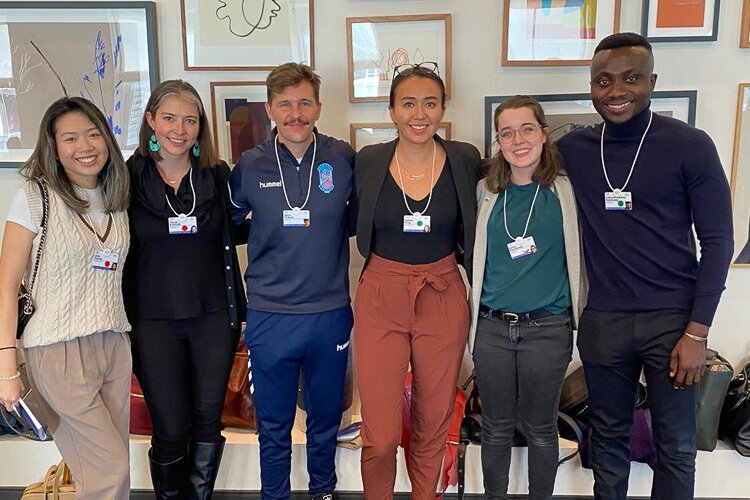 Kwame Botchway & Global Shapers: Curators from North America & CarribeansTwo organizations The Black Environmental Leaders Association(BEL), and the Global Shapers Cleveland Hub, have partnered to promote environmental justice through some very unique and intentional ways.
Kwame Botchway & Global Shapers: Curators from North America & CarribeansTwo organizations The Black Environmental Leaders Association(BEL), and the Global Shapers Cleveland Hub, have partnered to promote environmental justice through some very unique and intentional ways.
Local environmentalists began talking as early as 2016 before formally establishing BEL in November 2020—aligning themselves as stewards of the natural and built environment to collaborate and raise awareness and advocate for environmental and economic justice.
The Global Shapers CommunityAn international network of young people that drives dialogue, action and change as part a project of the World Economic Forum. There are more then 300 city-based hubs in The Global Shapers Community network.
Each hub is led by a curator (similarly to a president) and consists of a diverse group young people united by shared values: inclusion, collaboration and shared decision-making. Together they create projects and promote change in their communities.
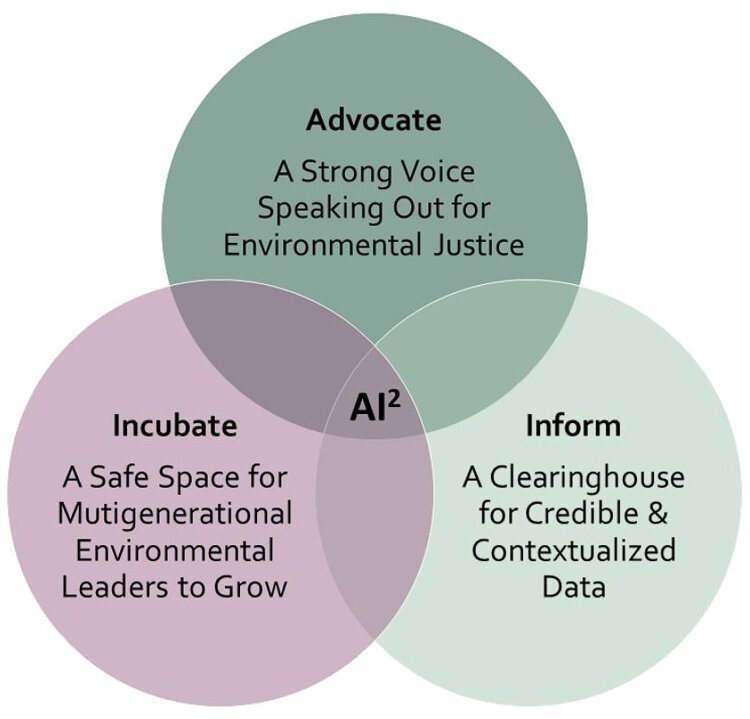 The BEL Method
The BEL Method
BEL’s strategy is to Advocate, Incubate, and Inform, or A12. Jacqueline E. Gillon (in memory), David Wilson, SeMia Brady led the organization as co-facilitators in unison.
“We utilize the distributed leadership model, which focuses on who is best to lead based on what we’re doing at the time,” says Bray, who explains that this approach avoids putting the burden on one person.
The group adopted this model, says Bray, because Gillon—considered one of the founders of Cleveland’s current environmental advocacy movement—believed everybody is a leader, bringing a level of expertise and agency to the table.
“We were very intentional about creating a circle of leaders,” says Bray.
BEL also implemented the concept of “head, heart, hands,” which speaks to how respective leadership styles complement each other for exponential growth. “Head, heart, hands” symbolizes the unique skill set each co-facilitator brings to the organization.
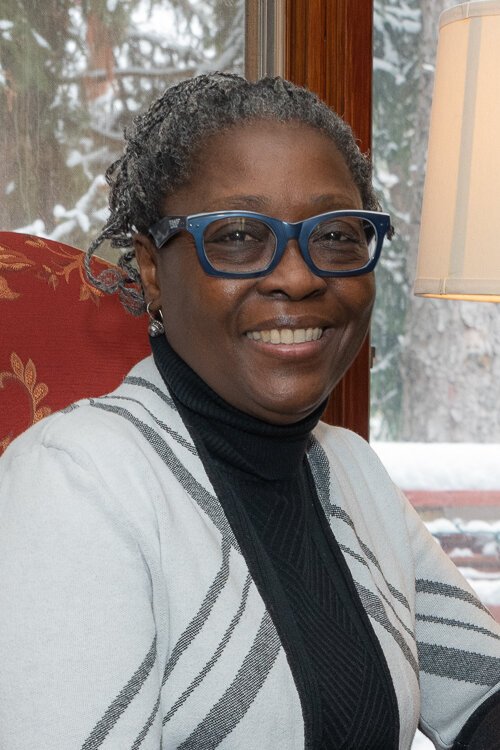 SeMia BrayWilson is the hands and Bray is the head. “It really sunk in when Jacquie passed away that she was the heartbeat of the organization,” recalls Bray. “She had a way of sharing her heart to where so many people considered her to be their best friend.”
SeMia BrayWilson is the hands and Bray is the head. “It really sunk in when Jacquie passed away that she was the heartbeat of the organization,” recalls Bray. “She had a way of sharing her heart to where so many people considered her to be their best friend.”
Wilson adds that GIllon saw the humanity within everyone. “She brought people into conversation. They came because of the topic and stayed because of the humanity.”
If Gillon saw something that needed to be changed, she wasn’t afraid to stand up and make her voice heard, says Wilson, and she unapologetically expressed her passion for improving the environment.
Environmental issues—such as poor air and water quality, lack of access to quality green space— especially in urban communities—toxic soil, climate change, food insecurity, transportation, and infrastructure, as well as lead in paint and pipes—are causing adverse health outcomes among the people who live where these problems persist and these issues are destroying the planet.
Poor health can be caused by environmental problems or inaction. These include anemia, weakness and kidney and brain damage, chronic illness, and infant mortality. The most pressing environmental justice issues in Cleveland include lead exposure, inadequate quality green space, shrinking tree canopy, energy, water, infrastructure, transportation, equity, and lack thereof.
“People are still having adverse health issues because of decisions made 50, 60 years ago,” says Bray. “Take redlining—the impact is still felt.”
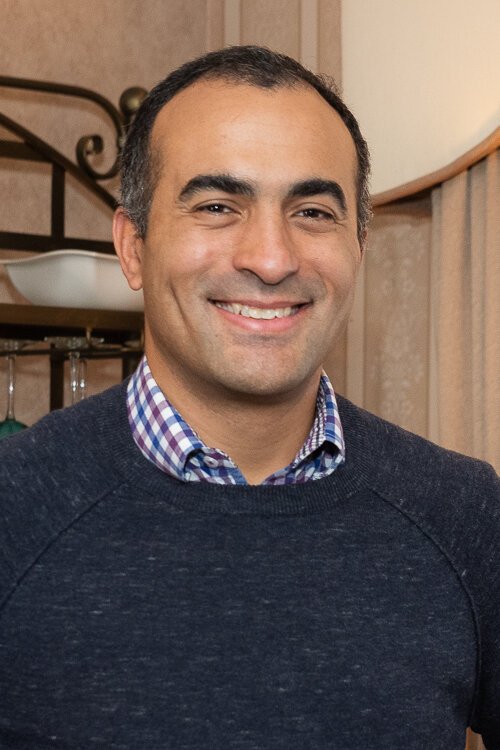 Dave WilsonRedlining causes food deserts in many urban areas. This can lead, for example, to obesity, diabetes, or other weight-related problems. The only food options are often junk food. That’s an injustice. Redlining can also lead to inequalities in green space, especially in neighborhoods that are not investing.
Dave WilsonRedlining causes food deserts in many urban areas. This can lead, for example, to obesity, diabetes, or other weight-related problems. The only food options are often junk food. That’s an injustice. Redlining can also lead to inequalities in green space, especially in neighborhoods that are not investing.
Bray explains that adequate green space can bring many benefits to a community, including cleaner air and better soil.
Wilson claims that access to parks can have psychological and mental developmental advantages as well. “It reduces stress and is proven that healthy child development occurs when they have access to green space.”
Wilson also believes that people coming together in public spaces fosters greater social cohesion and connections and improves the overall well-being of communities.
BEL has many people working simultaneously on different issues. In honor of Africa’s tribal traditions and vibrant cultures, BEL has five tribes based on environmental solutions areas, two affinity groups, and one overarching area to which all members contribute to and learn from, to facilitate collaborative decision making.
This shared leadership model allows the members to maximize the human resources within their organization by empowering individuals, and giving them the chance to take on leadership roles in their respective environmental solution areas.
“[It] allows us to get more done,” says Bray.
BEL is currently working on a number of environmental issues. These include the built environment and energy waste reduction, green buildings and healthy homes, healthy neighbourhoods, land, air and water. BEL also develops standards that inform policy.
BEL cofacilitators are also convinced that young people have a lot more agency and perspective than they realize, but they are often overlooked and not heard.
So, from the early days, BEL’s co-facilitators knew they needed to take an intergenerational approach to address environmental issues by creating a seat at the table for younger voices.
“These are generational issues that require generational solutions,” says Wilson.
Bray adds, “So, we’re saying young people are not the leaders of tomorrow. They are the leaders of today.”
Today’s leaders
The Cleveland HubThe Global Shapers Community was formed in 2011, shortly following the establishment of the international network. It is the only Ohio chapter and has 26 members ranging in age from 18 to 29 years. The group’s goal is to harness the passion of its members to create local change using a global lens. This includes sparking critical conversations and prototyping design solutions. Supporting community partners through project sprints and approaching problems through the lense of human-centered design.
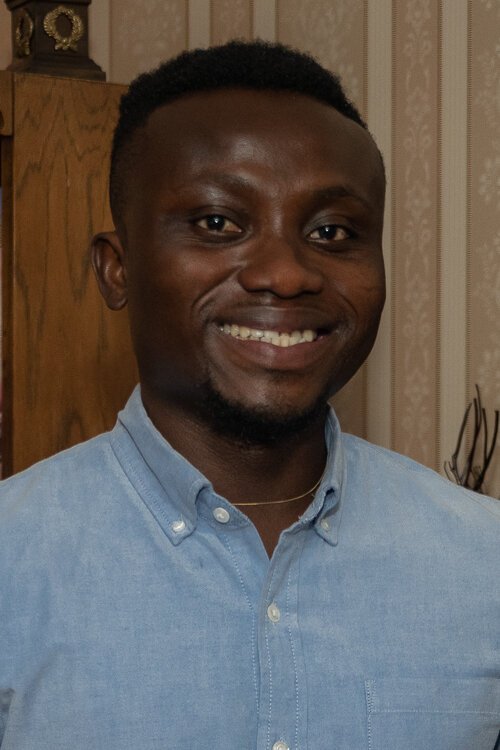 Kwame BotchwayKwame Botchway, a Ghanaian, currently works at the nonprofit as the director for impact and innovation. Cleveland Neighborhood Progress, is the curator of The Global Shapers’ Cleveland Hub.
Kwame BotchwayKwame Botchway, a Ghanaian, currently works at the nonprofit as the director for impact and innovation. Cleveland Neighborhood Progress, is the curator of The Global Shapers’ Cleveland Hub.
Botchway the group hosts two retreats each year to select issues members are passionate about, decide what projects members will work on in the community together, and tie these issues to the broader Sustainable Development Goals (SDG’s) of the global network.
“The Cleveland Hub has been doubling down on the environment over the last few years,” says Botchway. “So, we decided to host a Northeast Ohio Youth Climate Future Forum.”
Botchway says that in 2019, the Cleveland Hub reached to BEL to sponsor the October 2020 forum. Gillon played an important role in bringing the panel together. Gillon also offered to have BEL act as the hub’s fiscal sponsor.
“This collaboration [with Global Shapers] is an attempt to push back and show what an intergenerational model could look like,” says Wilson.
Bray believes Global Shapers met all requirements for BEL’s youth partners.
“Black Environmental Leaders Association is sent from heaven,” says Botchway. “They have been incredible partners. Jacqueline Gillon’s warmth and big smile are my fondest memories. She checked in every day, even during her illness. We are inspired by her work and will be carrying that torch forward.”
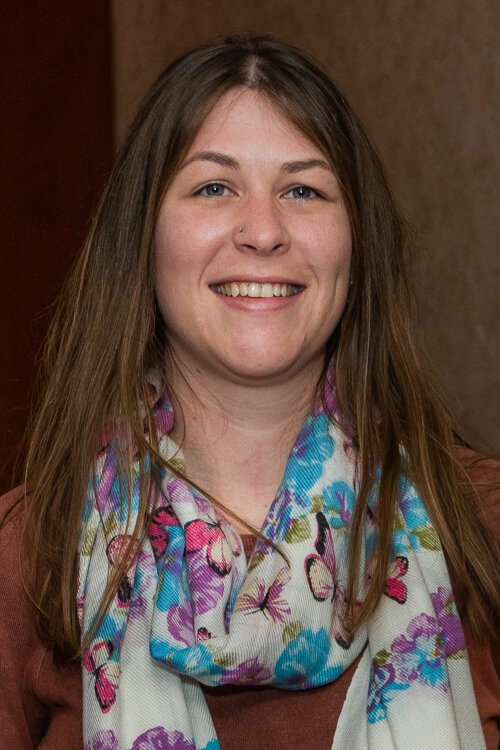 Elena StachewElena Stachew, a Cleveland native and Ph.D candidate studying biomimicry at the University of Akron with a focus on coastal erosion, has been a member of Global Shapers’ Cleveland Hub since Sept. 2017. She was vice curator and project leader.
Elena StachewElena Stachew, a Cleveland native and Ph.D candidate studying biomimicry at the University of Akron with a focus on coastal erosion, has been a member of Global Shapers’ Cleveland Hub since Sept. 2017. She was vice curator and project leader.
As a more senior member, Stachew is the “climate action guru” who helps get a lot of the climate projects off the ground. At the 2019 Cleveland Climate Action Summit, she represented Cleveland. U.N. Youth Climate Summit.
Stachew, who initiated the relationship with BEL, says she considers the members to be true partners, mentors, and friends—adding the group has been accessible, transparent, friendly, and welcoming.
“It’s been absolutely amazing,” Stachew says. “I love working with SeMia, David, and Jacquie, when she was with us. She just warmed everyone’s heart.”
Global Shapers was established as a result the NEO Youth Climate Future Forum. Northeast Ohio Youth Climate Action FundThis organization issues small grants of up to $2,500 to local teens with project ideas that address the environment.
Global Shapers also plans to host “Listen, Lead, Share” community conversations on environmental justice as it pertains to Northeast Ohio, through the support of the Ohio Climate Justice Fund. BEL is also a partner in the promotion of equity, justice, and job opportunities in Ohio.
Global Shapers is always actively looking for new members, and encouraging young people to pursue long-term careers in any industry. Support and professional development are offered in Cleveland
“We help our members gain leadership experience and broaden their skills in ways they may not get a chance to on their day jobs,” says Stachew.
Knowing environmental justice issues are all interconnected, that they need a holistic approach and are going to be even more aggravated in the future, Botchway says, “The goal is to work together, collectively, to address the issues in a more comprehensive way.”
Stachew says what frustrates her the most is how sustainability became its own entity and isn’t embedded in every discipline.
“I wish no matter what major [in college]You are required to take a sustainability class or ecology class depending on the area you live in. [to] understand the geography, the geology, the natural history, and to even be able to identify some local plants and trees,” says Stachew.
Stachew explains that this knowledge can inspire people to call a place like Cleveland their “home” and be embedded within their communities to make our region a more livable, happier, and equitable place for all.
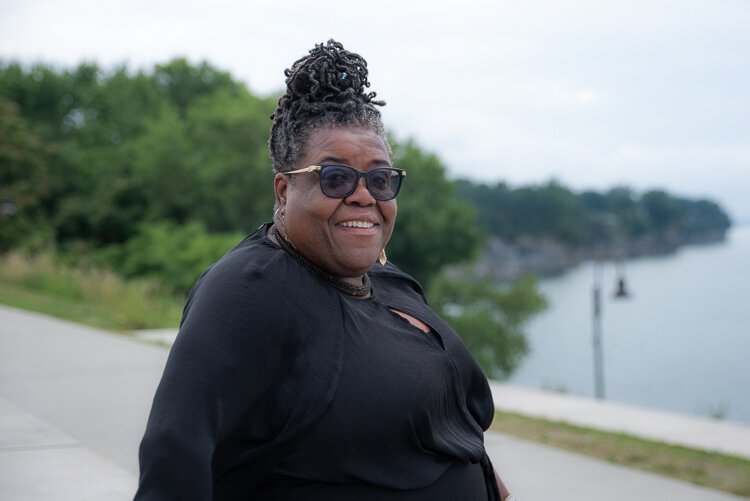 Jacqueline E. Gillon, one of the founders and leaders of Cleveland’s current environmental advocacy movement is one of BEL’s co-facilitators.Jacqueline E. Gillon’s legacy
Jacqueline E. Gillon, one of the founders and leaders of Cleveland’s current environmental advocacy movement is one of BEL’s co-facilitators.Jacqueline E. Gillon’s legacy
Gillon A victim of cancer.Last August 24, at 65, she died. In addition to her commitment and service to BEL, she also worked at the Western Reserve Land Conservancy. Her contributions to the environment justice space are well-known in Cleveland and across the country.
Gillon’s younger brother Sidney Gillon explains that their dad was active in politics. This interest spilled over into Gillon’s younger brother Sidney Gillon who was elected the youngest East Cleveland city commissioner right out of college. He also served as an East Cleveland City Council member.
“For her, it was the impact, what you can do for your neighbor,” Sidney Gillon says. He recalls “The Renaissance for East Cleveland” at Pattison Park, as one of her early land use projects and her enthusiasm for the passage of the Clean Water Act in 1972 — the first environmental legislation ever enacted.
“That was a big motivator for her,” Sidney Gillon recalls. “Things that motivated others didn’t motivate her.”
Mark McClain, Gillon’s oldest friend, says she was a longtime community advocate, which sparked her interest in environmental issues. “Environment is paramount to community work,” says McClain. “It touches the community.”
McClain says this work became important to Gillon because she was a people person and you can’t be a people person without concern for the collective. “When you take a holistic approach, you have to look at the conditions in which people live.”
McClain states Gillon tried to help people understand the link between poor health outcomes and environmental issues. She also looked at environmental issues From a spiritual perspective. She believed God created the environment, and we are destroying.
“She always talked about the lack of buy-in, the fact that we didn’t pay attention and tried to connect those dots for the average ‘Joe;’” says Sidney.
McClain hopes Gillon’s efforts were not in vain. “We have to continue the fight,” he says.
Elise Thompkins, Gillon’s roommate at Hiram College, says one thing she learned from Gillon is that the environment impacts our overall wellbeing, “It all came together, she tied her whole life’s work together,” Thompkins.
“Food insecurities, infant mortality, asthma—it all ties back to the environment.”
Thompkins says one of Gillon’s pet peeves was how the majority community thought Black people didn’t care about the environment. Gillon knew better. Gillon traveled to other cities, meeting other minorities who shared her passion for addressing environmental injustices. Jacquie, she says, was a great friend to young people.
“She wanted to do everything she could to inspire and support [them],” says Thompkins.
“Jacquie spent a lot of time making sure the generation who are becoming adults now has a firm understanding of where they’re at and how they got to where they are at. It’s not just random. There was work done,” says Sidney.
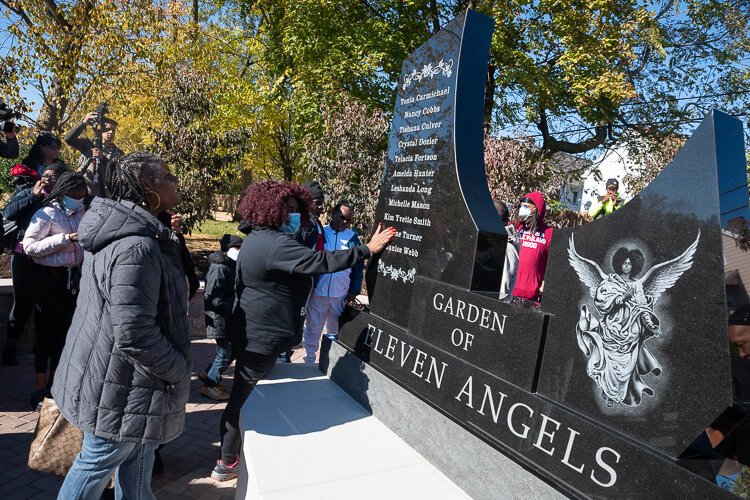 Garden of 11 Angels, Imperial Avenue, Cleveland’s Mount Pleasant neighborhood.Gillon was loved by all who knew her. Her passions were greenspace, land use, and especially the repurposing or reimagining vacant lots. It was Gillon who, early on after the discovery of the Anthony Sowell murders, advocated for the Garden of 11 Angels on Imperial Avenue in Cleveland’s Mount Pleasant neighborhood. Gillon was even a key influencer in its design, but he died before the November dedication.
Garden of 11 Angels, Imperial Avenue, Cleveland’s Mount Pleasant neighborhood.Gillon was loved by all who knew her. Her passions were greenspace, land use, and especially the repurposing or reimagining vacant lots. It was Gillon who, early on after the discovery of the Anthony Sowell murders, advocated for the Garden of 11 Angels on Imperial Avenue in Cleveland’s Mount Pleasant neighborhood. Gillon was even a key influencer in its design, but he died before the November dedication.
“Jacquie had a vision to see that land used in that way,” says Bray. “Her vision was to create a park where people can come together and gather to memorialize victims and survivors and be used for communal and collaborative purposes.”
Sidney says that Jacquie style, Sidney requested that her loved one be cremated, and a tree planted on their grounds. Elizabeth Baptist Church.
One thing about Gillon people may not know, notes her sister Sharon Simmons, is Jacquie’s musical talents and how much she loved to dance. “She was a gifted violinist. She played through junior and elementary school. high and was a part of the all-city orchestra.”
This story is the first in a ten-part series. It aims to show how intergenerational models can help in moving the needle in Cleveland in many ways, as well as to lift narratives of resilience or impact within the environment justice space. Coming stories will highlight different organizations working in environmental justice and climate change, as well capture the intergenerational voices that are working on these issues.

